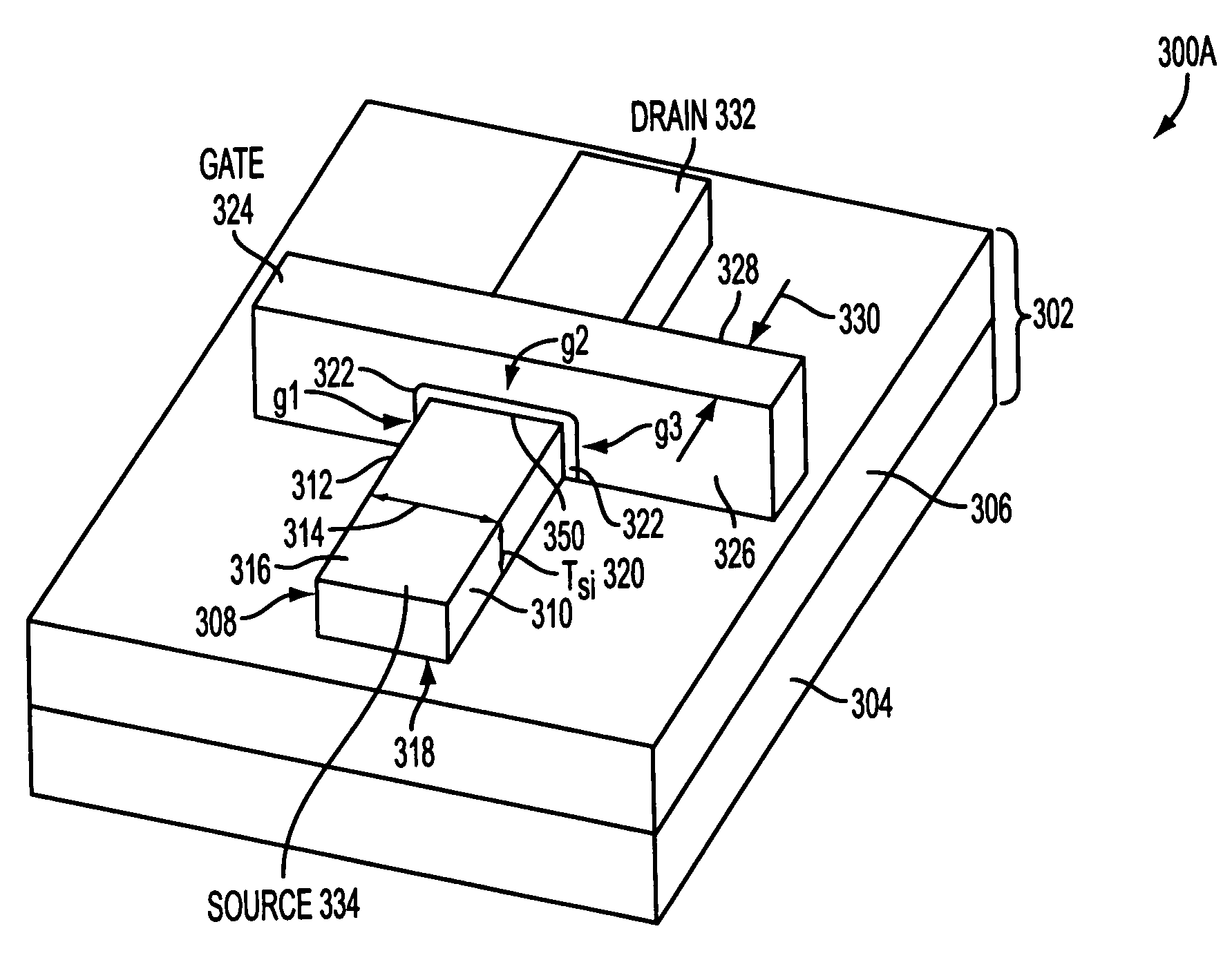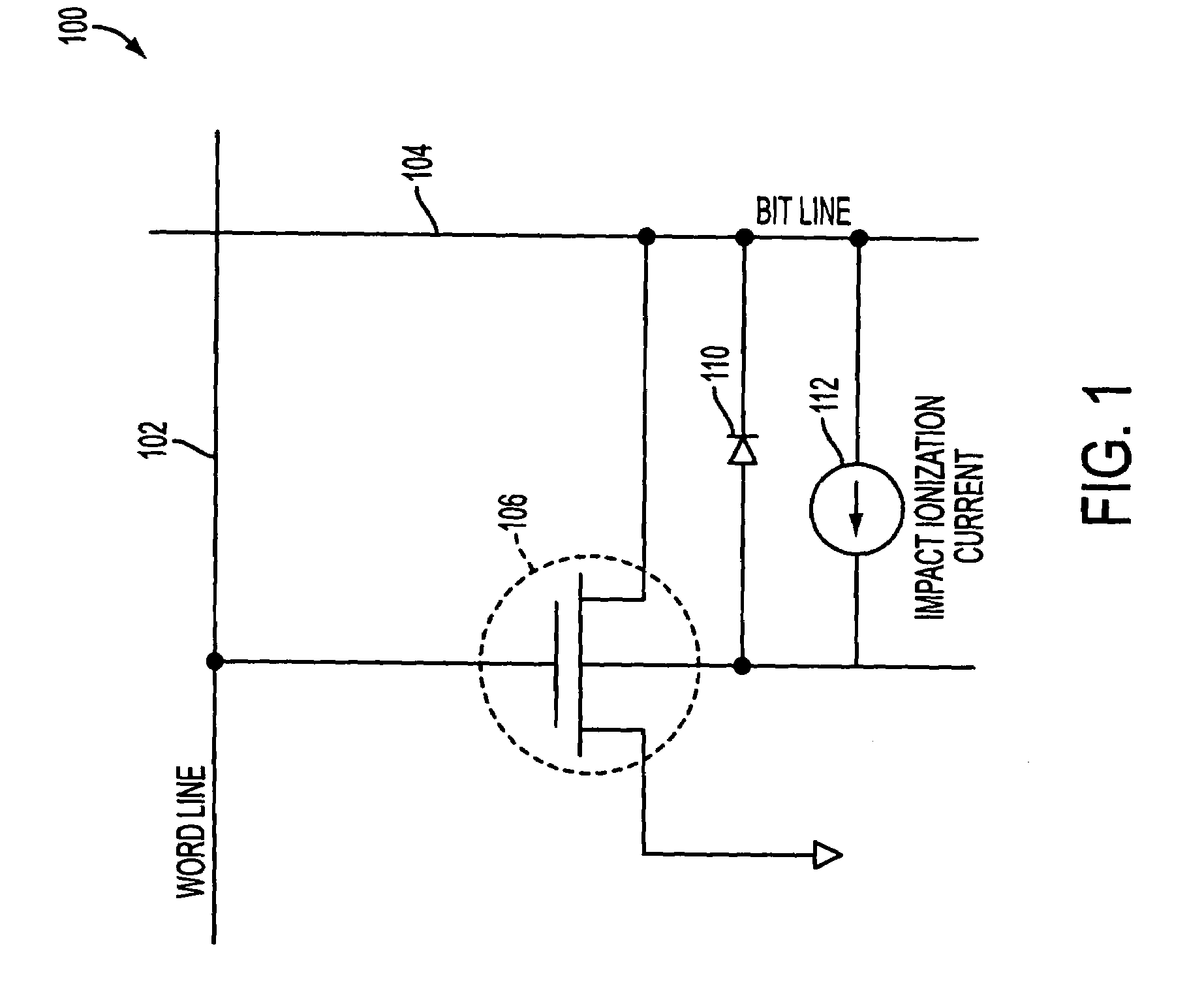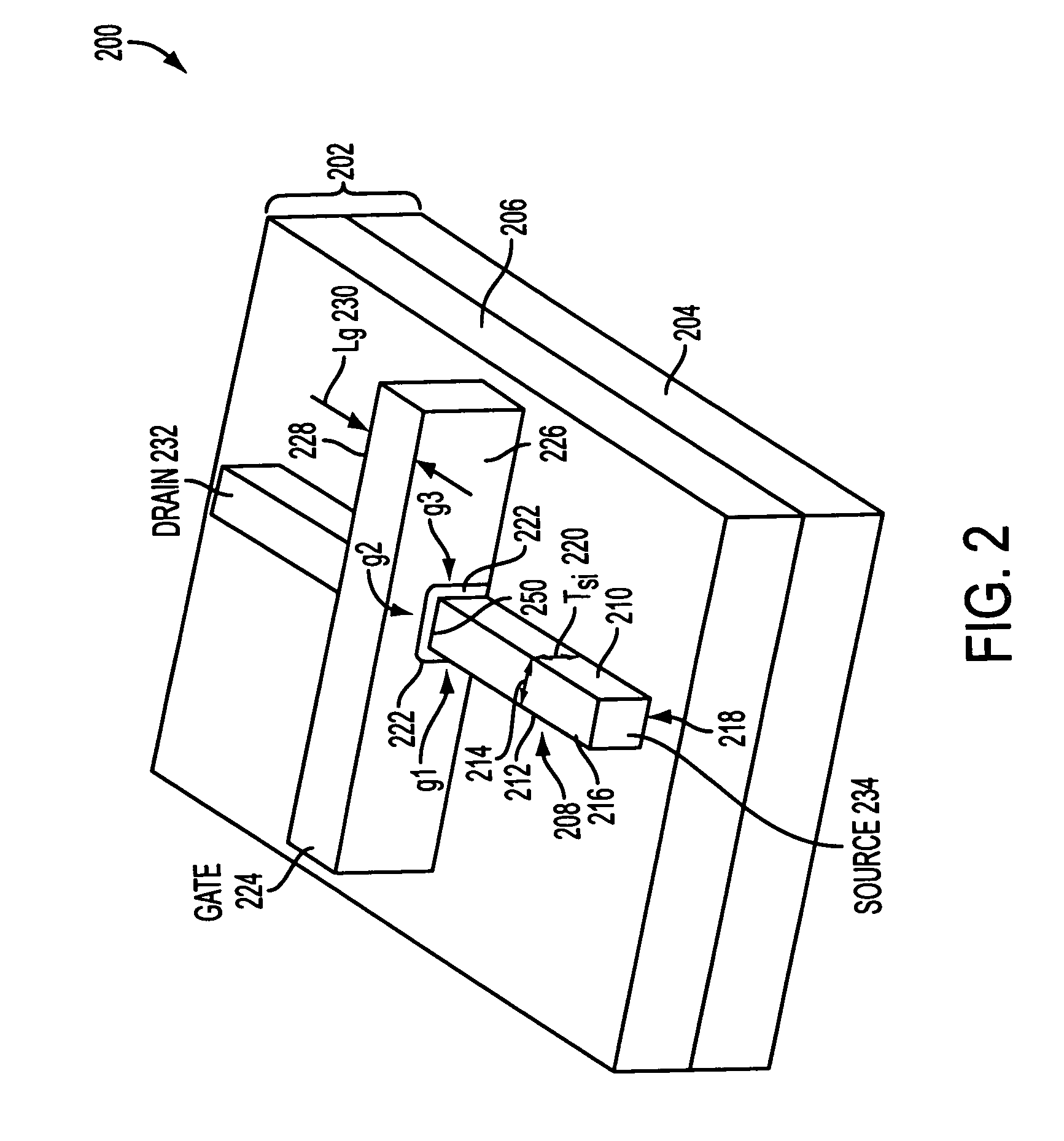Floating-body dynamic random access memory and method of fabrication in tri-gate technology
a technology of dynamic random access memory and tri-gate, which is applied in the direction of semiconductor devices, electrical equipment, transistors, etc., can solve the problems of limited area used by six transistor (6t) sram cells, which are typically used in large caches, and limit manufacturing costs
- Summary
- Abstract
- Description
- Claims
- Application Information
AI Technical Summary
Benefits of technology
Problems solved by technology
Method used
Image
Examples
Embodiment Construction
[0013]One embodiment of the invention is a novel floating-body DRAM (FBDRAM) in a tri-gate transistor structure and its method of fabrication. In the following description numerous specific details are set forth in order to provide a thorough understanding in the present invention. In other instances, well-known semiconductor process and manufacturing techniques have not been described in particular detail in order to not unnecessarily obscure the invention.
[0014]In an embodiment of the present invention, the FBDRAM may be implemented in a semiconductor on insulator (SOI) transistor. The FBDRAM may be used in partially depleted substrate transistor applications. In an embodiment of the present invention, the FBDRAM is configured using tri-gate technology that may include a thin semiconductor body formed on a substrate. The substrate may be an insulating substrate or a semiconductor substrate. A gate dielectric may be formed on the top surface and the sidewalls of the semiconductor b...
PUM
 Login to View More
Login to View More Abstract
Description
Claims
Application Information
 Login to View More
Login to View More - R&D
- Intellectual Property
- Life Sciences
- Materials
- Tech Scout
- Unparalleled Data Quality
- Higher Quality Content
- 60% Fewer Hallucinations
Browse by: Latest US Patents, China's latest patents, Technical Efficacy Thesaurus, Application Domain, Technology Topic, Popular Technical Reports.
© 2025 PatSnap. All rights reserved.Legal|Privacy policy|Modern Slavery Act Transparency Statement|Sitemap|About US| Contact US: help@patsnap.com



